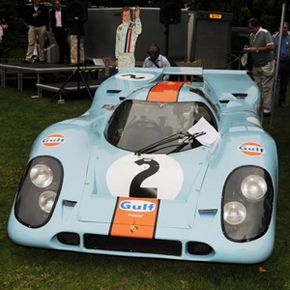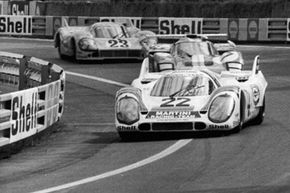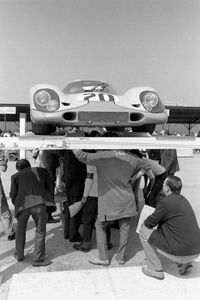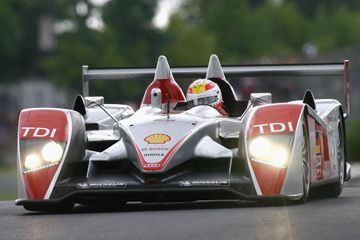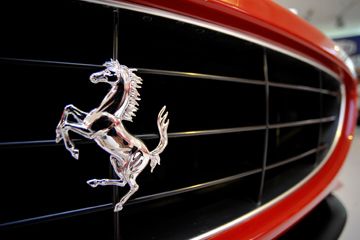If someone were to make a list of the greatest racecars ever made, the Porsche 917 would almost certainly have to be on it. In fact, the 917 makes a pretty good case for itself to be the greatest racecar of all time.
Want some proof? How about how with some iterations of the car rated between 1,110 and 1,500 horsepower, it remains one of the most powerful racecars ever made -- not bad for a car that competed in the early 1970s.
Advertisement
Then there's how the car dominated at the track, securing multiple victories at the 24 Hours of Le Mans, Daytona, Watkins Glen and a host of other events and tracks. The car was also immortalized in the Steve McQueen film "Le Mans," which included footage of its victory in that race in 1970 [source: Lieberman].
There are many more reasons why the 917 is considered among the all-time greats. If you don't immediately recognize those three numbers, don't worry -- you've probably seen the car in photographs somewhere.
With the car's low, wide shape that included a tapering tail at the back, swooping front fenders and massive tires, it looked especially striking in its iconic blue-and-orange Gulf Oil livery. Yes, it's that car.
According to Porsche, when 50 international motor sports experts from the British magazine Motor Sport were asked to name the greatest racing car in history, they cited the Porsche 917 [source: Porsche].
But while its reputation is considerable today, the 917 got off to a rocky start in the late 1960s when Porsche struggled to build enough examples of the car to qualify for competition. Then they had trouble finding drivers brave enough to drive the beast, whose power far outpaced its handling. It was also initially plagued with development problems. But Porsche persevered with the 917, and after some tweaks, the German automaker had a more than just a winner on their hands -- they had the makings of a legend.
In this article we'll learn all about what made the iconic 917 tick, and take a look at its lasting impact on racing and popular culture.
Advertisement

